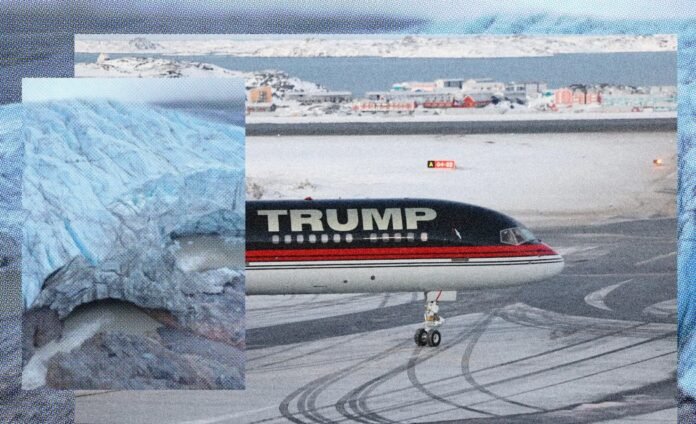Beneath the thick layers of ice that have defined Greenland’s landscape for centuries lies something far more valuable than its pristine wilderness: a treasure trove of rare earth elements (REEs) that could help power the world’s clean energy future. As the global demand for these critical minerals surges, driven by advancements in renewable energy, electric vehicles, and electronics, Greenland finds itself at the center of a new geopolitical struggle. The question now is whether this icy island could break China’s near-total control over the global rare earth supply chain or become embroiled in a new set of global tensions.
The Strategic Importance of Rare Earth Elements
Rare earth elements, which include metals like lithium, cobalt, and neodymium, are essential for the production of high-tech devices, wind turbines, electric vehicle batteries, and even military technology. They are, in short, the building blocks of the modern world. However, despite their importance, the supply of these elements is precariously concentrated. China dominates the global market, controlling around 80% of the world’s supply of rare earths, giving it immense leverage over industries that depend on these minerals.
This dominance has raised alarm in Western countries, particularly as the world pivots towards green technologies. In a bid to break free from China’s grip, many nations are looking to diversify their sources of rare earths, with Greenland emerging as a key player. The island’s vast, untapped deposits have become increasingly attractive, but extracting these elements comes with its own set of challenges—and geopolitical consequences.
Greenland’s Role in the Clean Energy Revolution
Greenland’s geological makeup suggests that it may be sitting on one of the largest untapped reserves of rare earth elements in the world. With vast deposits of critical minerals beneath its ice sheets, Greenland could potentially reshape the global supply chain. The island’s deposits are particularly rich in minerals like neodymium, which is essential for the magnets used in wind turbines and electric motors, and lithium, which is a key component in the batteries that power electric vehicles.
The clean energy revolution, which hinges on the widespread adoption of renewable energy technologies like solar and wind power, cannot proceed without a steady and reliable supply of these minerals. Greenland’s vast mineral wealth presents an opportunity to meet this growing demand, not just for the West, but for the entire global community.
The Geopolitical Stakes
The prospect of Greenland’s rare earths becoming a viable alternative to China’s supply has turned the island into a new geopolitical battleground. Greenland, a self-governing territory of Denmark, sits in a strategically important location between North America and Europe, making it a valuable geopolitical asset. The extraction of rare earth elements from its icy landscape could shift the balance of power in global trade and energy politics.
Western nations, particularly the United States and European Union, are keenly aware of the strategic value of Greenland’s resources. As part of the broader effort to reduce dependency on China, the U.S. has already been in discussions with Denmark and Greenland about potential mining projects. The Trump administration even considered offering Greenland to the United States, though the proposal was dismissed as a publicity stunt. Regardless, the interest in Greenland’s minerals remains high.
Meanwhile, China, which is keen to preserve its monopoly on rare earths, is unlikely to stand by idly. The country has a history of using its control over these materials as a geopolitical tool, leveraging its dominance in the market to gain influence over other nations. If Greenland becomes a key player in the rare earth supply chain, it could have far-reaching consequences for China’s global ambitions.
Environmental and Ethical Concerns
While the potential for Greenland to provide critical minerals for the clean energy transition is undeniably enticing, the process of extracting these materials raises significant environmental and ethical questions. Greenland’s fragile Arctic ecosystem is already facing the consequences of climate change, and the introduction of large-scale mining could exacerbate these impacts.
Mining rare earths is a complex and environmentally taxing process, often involving toxic chemicals and the destruction of local habitats. Additionally, the extraction of minerals from beneath Greenland’s ice could accelerate the melting of the island’s glaciers, contributing to rising sea levels and further climate destabilization. The environmental cost of exploiting these resources is a topic of intense debate, and many local Greenlandic communities are wary of the potential consequences.
There are also concerns about the ethical implications of mining in such a sensitive region. Greenland’s Indigenous population, the Kalaallit, has expressed unease about the environmental impact of mining, as well as the potential for economic exploitation. While mining could bring significant revenue to the island, many worry that it could also lead to a situation where Greenland’s resources are extracted for the benefit of foreign powers, rather than for the local community.
A Delicate Balance
As the global demand for rare earth elements continues to rise, Greenland’s role in the clean energy transition could become a defining factor in the future of the global economy. The island’s vast resources present an opportunity to break China’s near-total control over the rare earth market, but this opportunity comes with its own set of challenges.
The environmental risks, ethical concerns, and potential geopolitical tensions surrounding Greenland’s rare earth deposits highlight the complexity of the situation. Western nations are eager to tap into these resources, but they must also navigate the delicate balance between securing energy independence and protecting the island’s environment and people.
In many ways, Greenland’s future is a microcosm of the larger global struggle between the desire for economic growth and the imperative of environmental sustainability. The clean energy revolution may depend on rare earth elements, but it is crucial that this transition is handled responsibly and equitably. If Greenland can navigate these challenges, it could become a key player in the global effort to combat climate change. If not, it risks becoming yet another flashpoint in the ongoing geopolitical rivalry over resources.
Conclusion
Greenland’s rare earth deposits could offer a much-needed solution to the world’s clean energy challenges. However, tapping into these resources will require a careful balancing act between environmental protection, ethical considerations, and geopolitical maneuvering. As the global demand for rare earth elements continues to grow, the future of Greenland—and its role in the clean energy revolution—remains uncertain, but undeniably crucial. The coming years will likely see the island play a pivotal role in shaping the future of energy and geopolitics.




